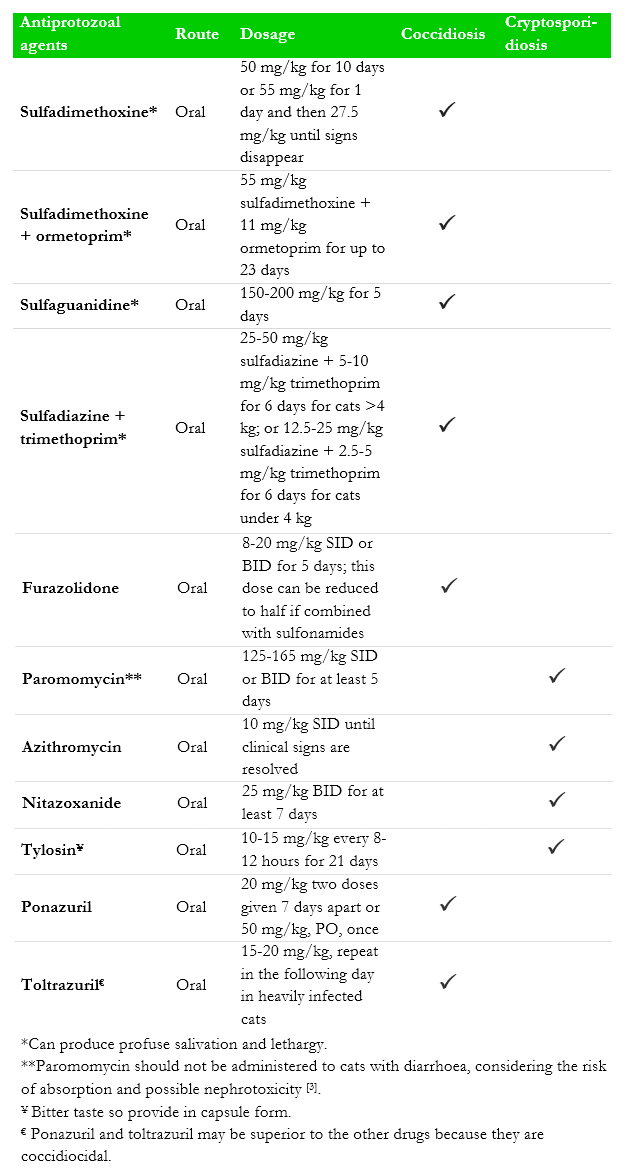Intestinal Coccidia
(Cystoisospora spp.)
Cystoisospora spp. (syn. Isospora spp.) are intestinal protozoans that infect a wide range of wild and domestic animals, including cats. Species that infect cats are highly host-specific and therefore not zoonotic.
Distribution
Worldwide.
Clinical signs
Cystoisospora-associated disease is mainly seen in kittens or naive adult cats entering in catteries where the infection is endemic. Clinical signs include vomiting, abdominal discomfort, inappetence, and watery diarrhoea (sometime with blood) [1]. Severe dehydration and death can occur.
Diagnosis
Cystoisospora infections in cats can be confirmed by standard faecal flotation (SOP 1). Oocysts are approximately 38-51 x 27-39 μm in C. felis and 18-28 x 16-23 μm in C. rivolta [1] (Fig. 1)

Figure 1. Oocysts of Cystoisospora rivolta in cat faeces recovered by faecal floatation (Image credit: Dr. B. K. Linh)
Treatment
Coccidiosis is generally self-limiting, and most healthy kittens will resolve clinically without therapy. However, administration of treatment can speed resolution of clinical disease and may lessen environmental contamination and the potential for infecting other in-contact animals [1]. Options for labelled and off-label antiprotozoal treatment for coccidiosis in cats are detailed in Table 2.
Table 2. Routes of administration, dosage and efficacies of commonly utilised antiprotozoal agents against coccidiosis and cryptosporidiosis of cats [1,2].
Prevention and Control
Good hygienic practices, regular washing of cages, and prompt removal of faeces before oocyst sporulation are advised.
Public health considerations
None.
References
[1] Lappin M. Update on the diagnosis and management of Isospora spp. in dogs and cats. Top Companion Anim Med. 2010;25:133-135.
[2] Scorza V, Tangtrongsup S. Update on the diagnosis and management of Cryptosporidium spp infections in dogs and cats. Top Companion Anim Med. 2010;25:163-169.

